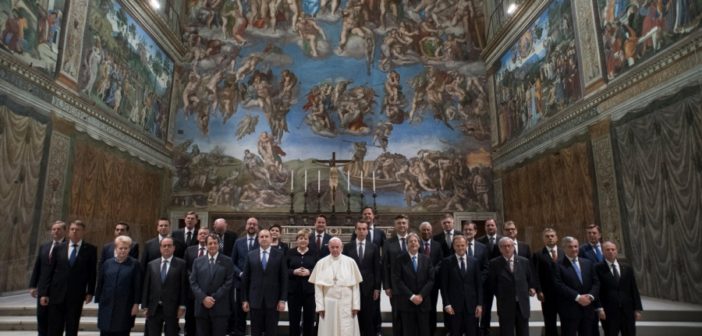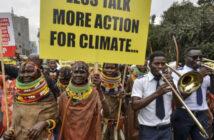The European Union, EU is today marking its 60th anniversary and the muted celebration is taking place where it all began-Rome.
The treaty of Rome signed by France, Belgium, West Germany, Luxembourg, Italy and Netherlands on the 36th March 1957 and came into force on the on 1 January 1958 is the fore-bearer of the EU which has 27 members today without the United Kingdom.
Posing with Pope Francis before Michelangelo’s masterpiece “The Last Judgment” at the Vatican, European Union leaders are showing commitment to somehow rekindle the vigor of the bloc in spite of Brexit and Trump’s rhetoric against it by going back to its cradle.
More and more, it looks like the EU’s future will have less unanimity and more areas where groups of EU nations advance on their own when faced with resistance from others on specific issues, Prime Minister Xavier Bettel of founding EU nation Luxembourg told The Associated Press.
Francis said the EU was called “to care for the ailments that inevitably come with age, and to find new ways to steer its course. Yet unlike human beings, the European Union does not face an inevitable old age, but the possibility of a new youthfulness.”
At the Sistine Chapel, EU leaders posed with Francis in front of the Michelangelo fresco, which depicts the end of the world. Six decades ago, few would have imagined the end of the EU could even be discussed.
Long the mantra of the EU, the “ever closer union” pointed toward a seamless continent and an economic and political juggernaut. Now others, beyond Britain with its divorce plans, are looking for more of a “living apart together” relationship.
The EU’s Rome summit, while vowing unity, could instead be a watershed moment in moving away from it and toward a more practical road of partial alliances on certain issues.
“I’d rather have a two-speed Europe than a dead-end and no speed,” Bettel said. “When a country says ‘I don’t want to,’ I can say ‘Well, too bad. Don’t block me. Let me get on with it with others.'”
The bloc has proven in the past to be less than unified in decision-making on issues such as the single euro currency or the Schengen zone of unfettered travel, but it always left a taste of being less than ideal. Some call the future a two-speed Europe, or a Europe of concentric circles, but still it would allow nations to move ahead or closer who want to, no longer being held back by others.
The highlight of Saturday’s ceremonies will be the adoption of a Rome Declaration, a blueprint for the way ahead. Poland and Greece long had objections to what many would consider a harmless statement to rally all member states but swung around on Friday. It is that concern about paralysis that pushed the EU to look for other options.
The vision for the future development and integration of the EU is of a multi-speed architecture – that allows the “willing” to move ahead in some policy areas – to “act together whenever possible, at different paces and intensity where necessary, while moving in the same direction, as we have done in the past in line with the treaties and leaving the door open to those who want to join later …” No question of treaty change





